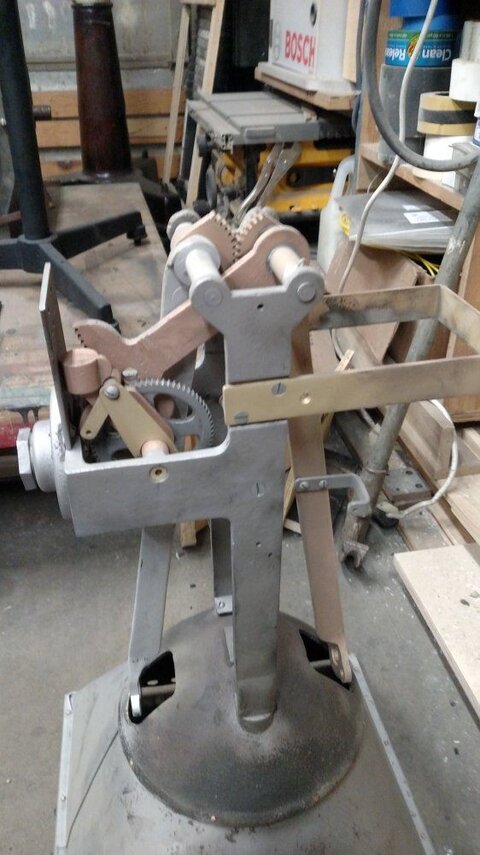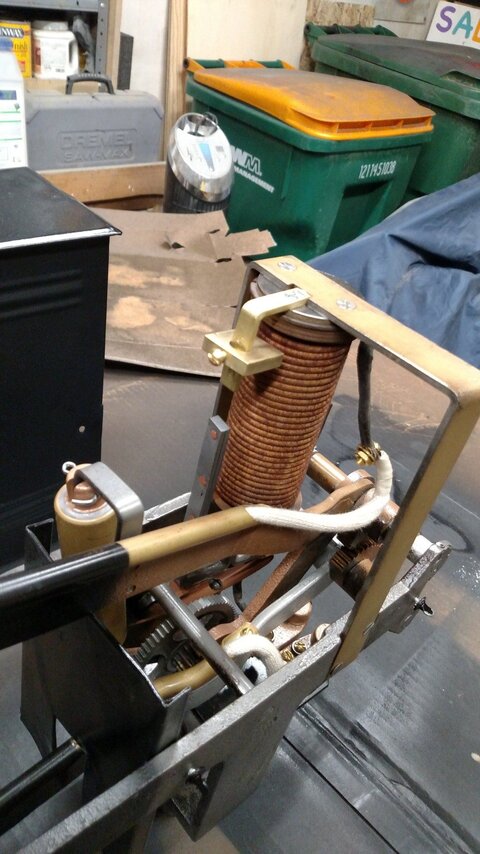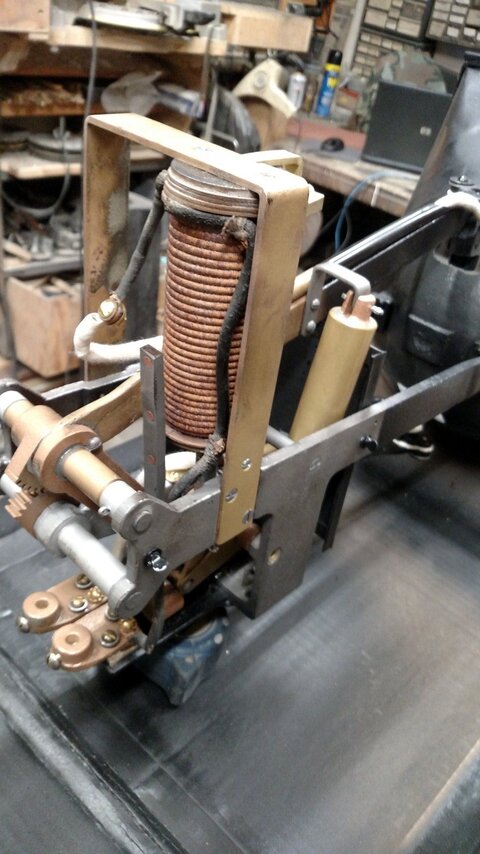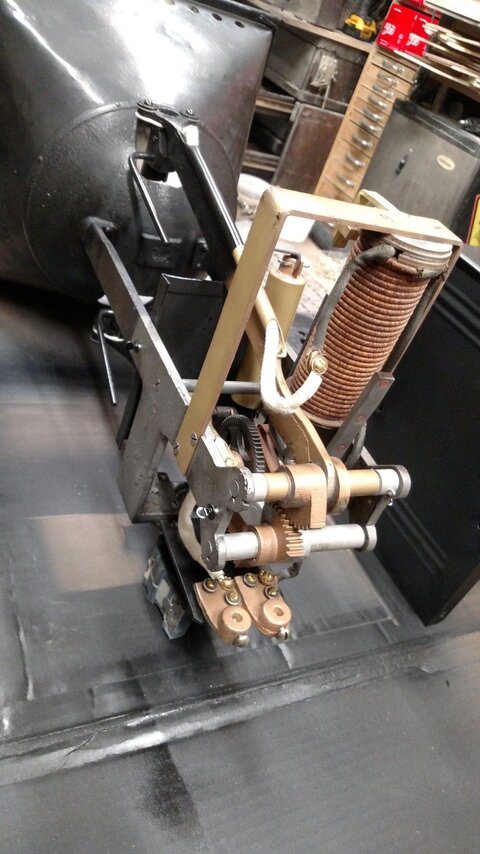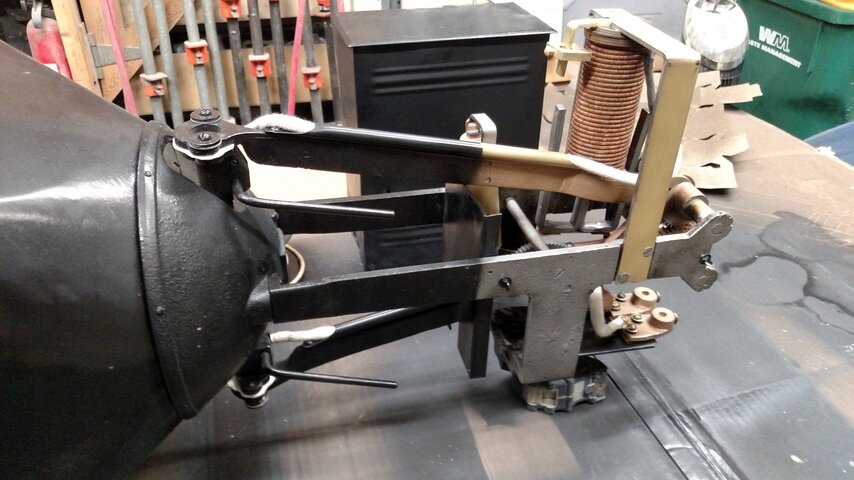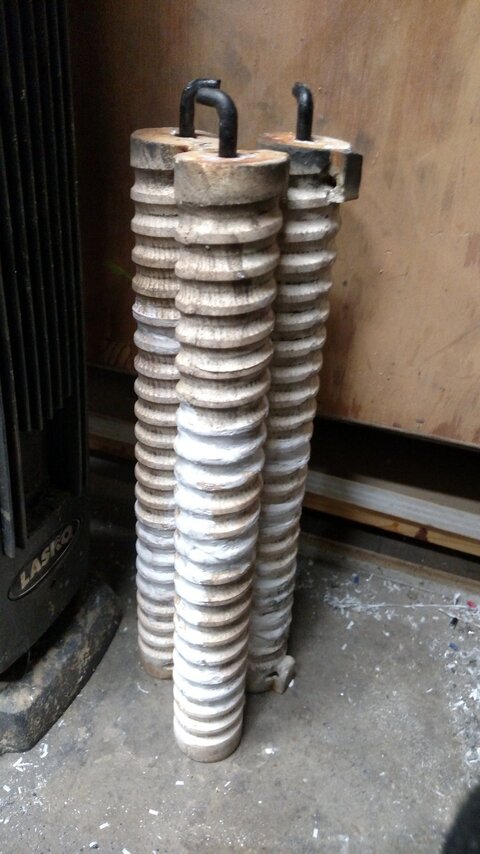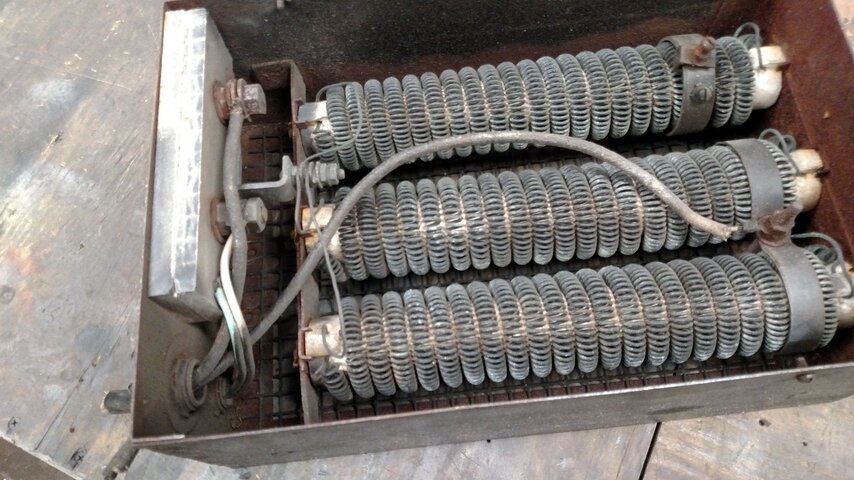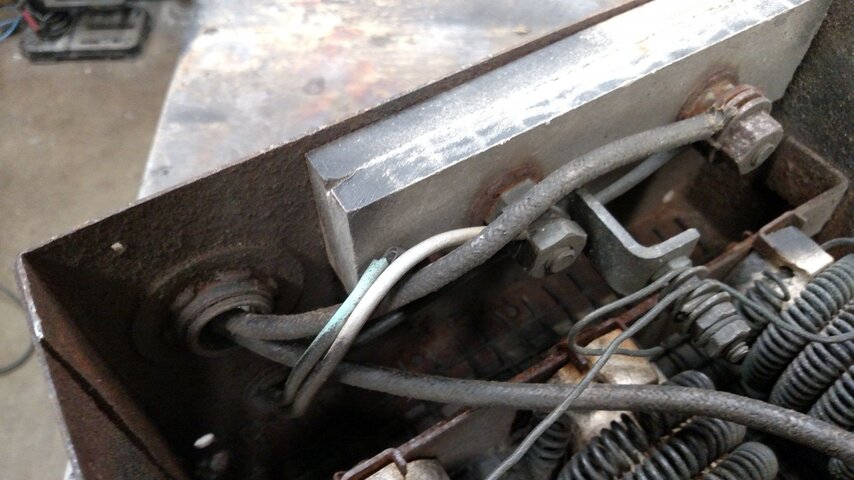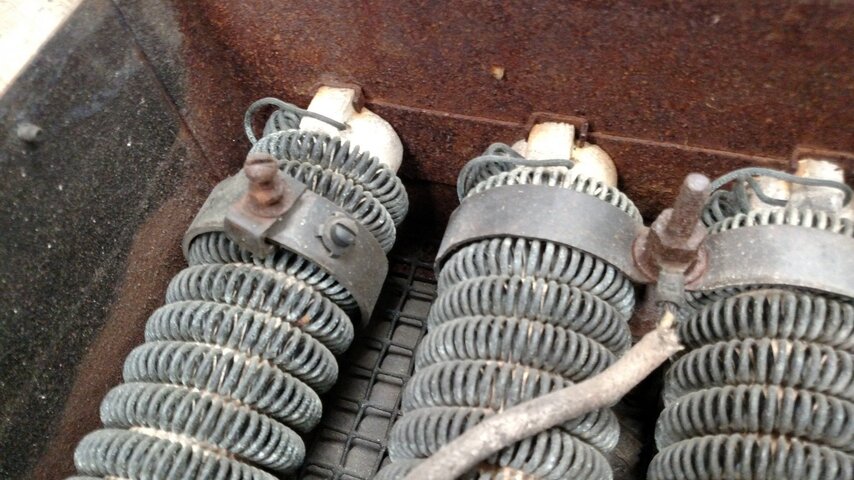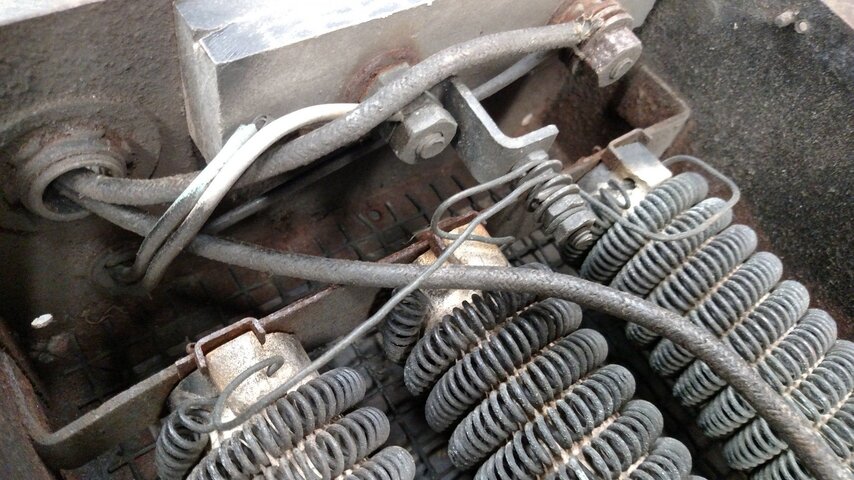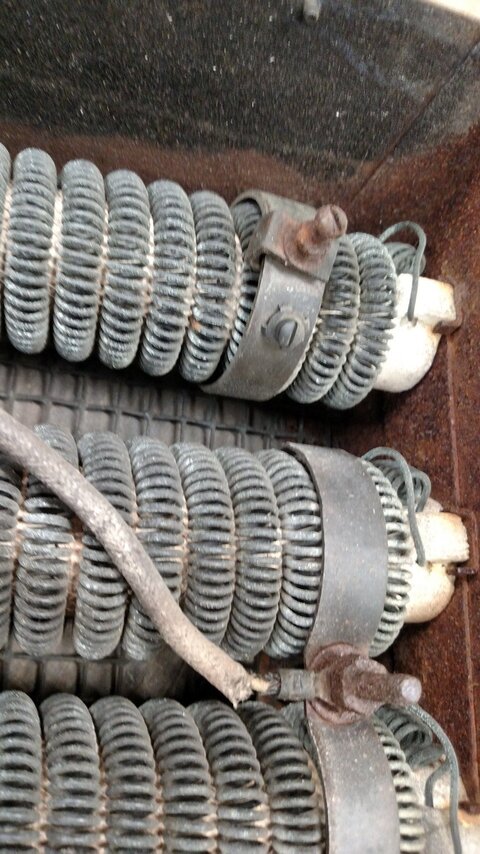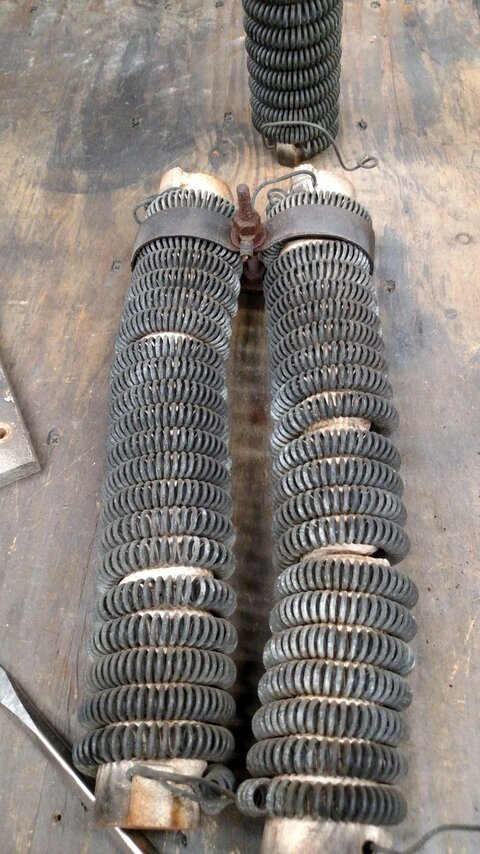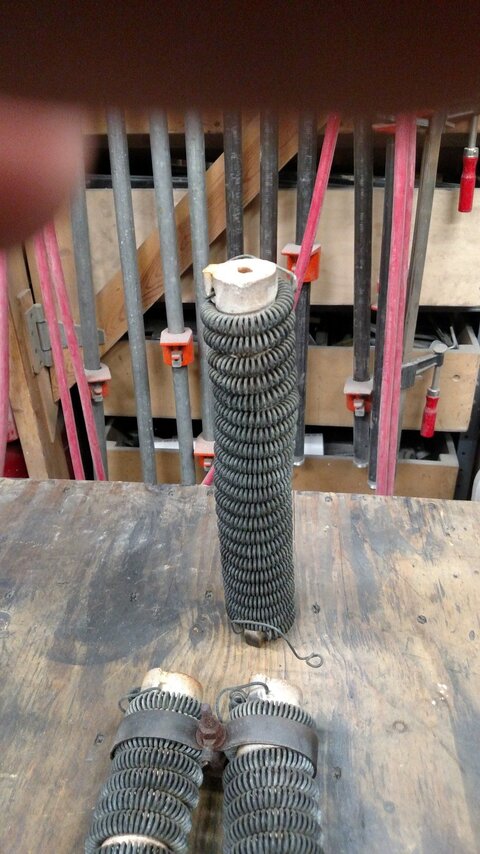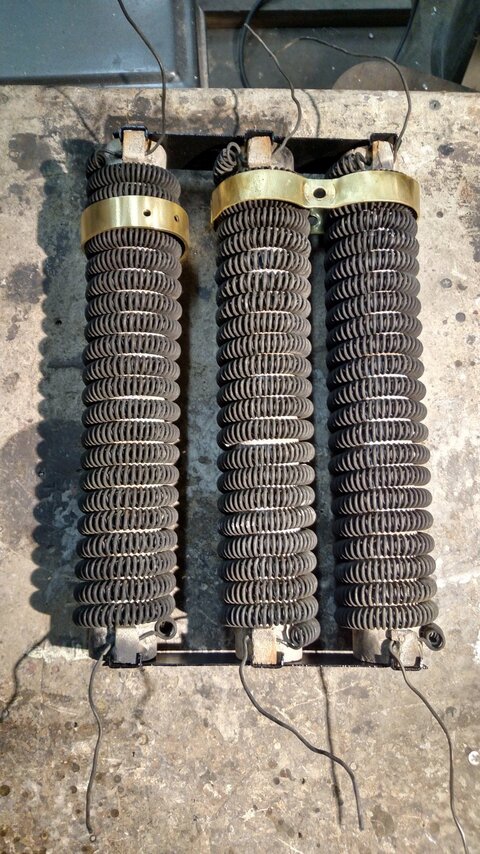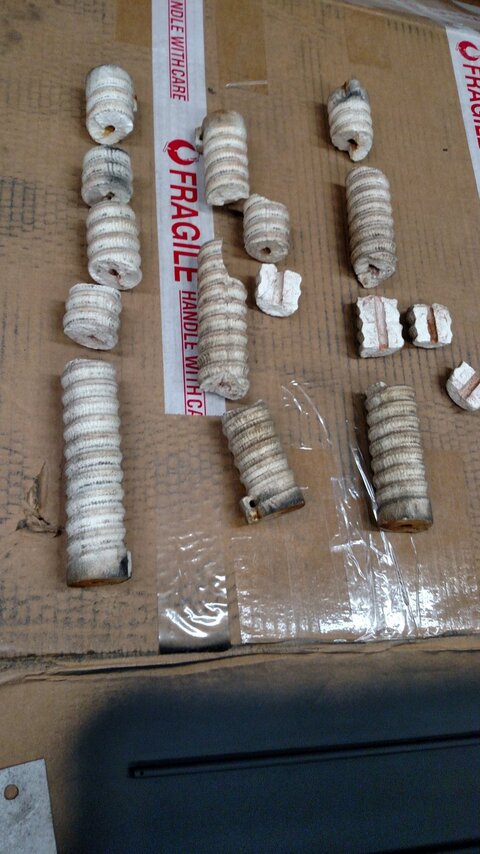Fixture head is wired & ready. TBD, insulating the carbon rod levers & getting two new carbon rods. After sand blasting it’s
cover, N / H were marked so that made it easy to determine the electro magnet & arch stop mech. was running
thru the
neutral.
Resistor core onto wiring now. I finally got the
porcelain coil supports to glue back together - only one core broke in half as I was re-coiling the
resistor spring to it. Was able to stretch the spring out enough to glue & clamp it back together. All cores are now at least self supporting in holding them horizontally. Should be fine given they live vertical and at most only has to work once.
Thought I took enough photos, & given it’s been weeks since I started the project - especially this part I took apart first.... A few problems are coming up in the pre-wiring of the resister core.
First, the
plug 3-conductor non-NEMA open faced
plug that was somehow grounded to frame. Photos indicate it’s grounded
thru the first
asbestos isolation
block mounting near the center of the
fixture. It is using 12/3 type S cable so brittle and cracked, (rated for 20A - not 25A) you can literally pluck the outer
jacket off the cable with a finger. That said, the cable and grounding probably isn’t original. Very early say 1950 or earlier, in even if really old, I don’t it’s the original cable feeding the
fixture. (Grounding for a AC/DC
fixture?) Given the brass braising repairs to the light
fixture, probably earlier than the 40's when last attempted to use - after it fell over, or perhaps post after it fell over and broke the
porcelain resistor coils.
Will it now grounded become a problem given some sort of shorting to frame theory of in not grounded and the
fixture head assembly not being grounded and it’s stop mechanism somehow getting more resistance? Or does this grounding answer the question of
current flow in how the stop mechanism works? Don’t know.
Second, While very oxidized in
conductor color, I believe the hot
wire goes direct to the lower
asbestos block terminal, than up to the lower arm. This by way of what is left of
wire coloring in photo - that which is not covered in
carbon arc dust. And in trusting the above re-wiring
conductor colors. Was it correctly re-wired at least a half century ago? The resistore core box was missing it’s
cover which might have had stamped H/N indications on it (or not). Had to make a new
resistor core
cover. Given the evidence, the hot
leg of
power feeds directly
thru the
resistor core, to the
fixture head and its electrode. The
neutral conductor does all of the electromagnetic work and
resistor core work. That sound correct?
Third, Given the
neutral line to the
fixture head attaches to the above dual copper brackets of the coil, what’s going on with the like +6" long upper part of the
wire not used? I simply do not remember what this upper
conductor was doing, but it’s long enough to be doing something. Almost appears as if this
wire were shoved down into the
resistor coil spring - but that doesn’t make much sense. Cannot see anywhere on the frame they were attached to. Being they are resistors/heater coils, do they contact back to the hot I’m not seeing in photo and some connection I am forgetting about? Believe I only see a
Line in,
Line out to
fixture head connection, but perhaps on that outside to the left
terminal block it has another connection to all of these conductors? That’s something important I missed, and something I don’t understand completely yet.
I note in the 6th photo, there are 4 solid conductors under the
terminal.... that's interesting.



